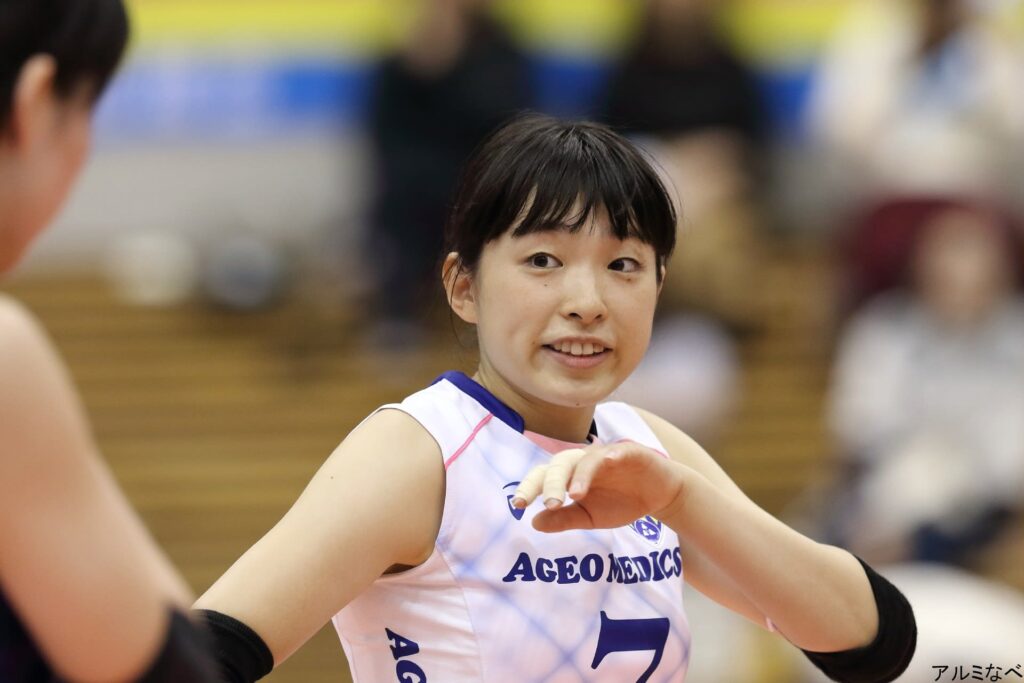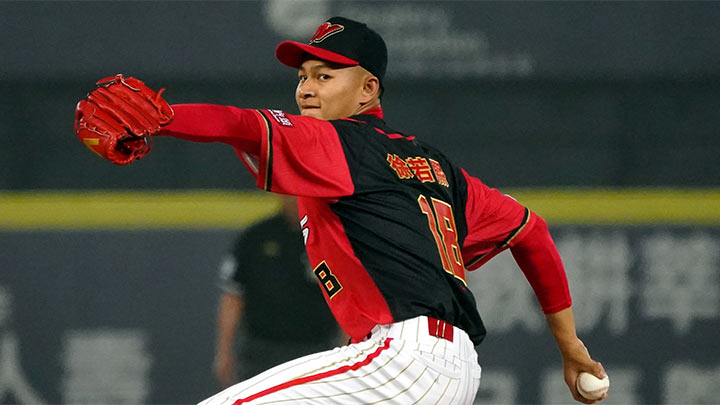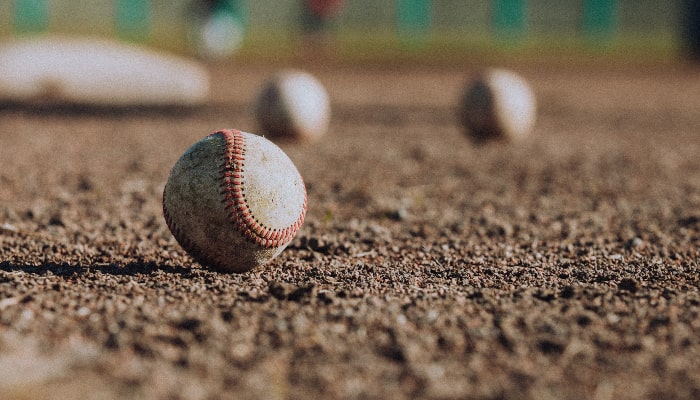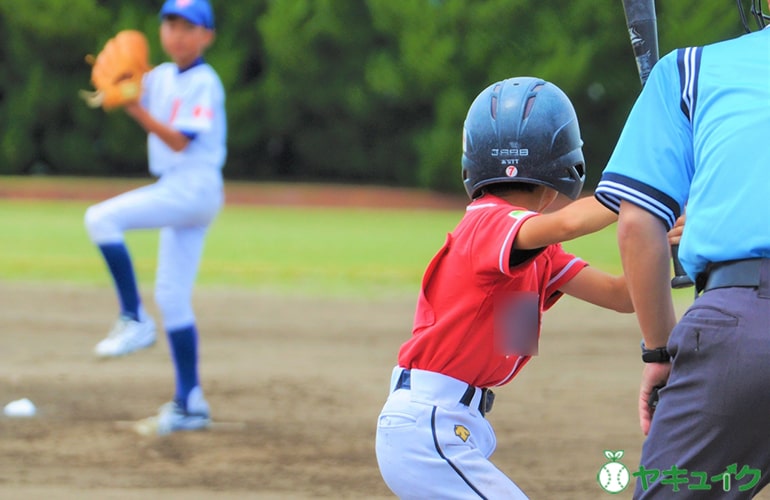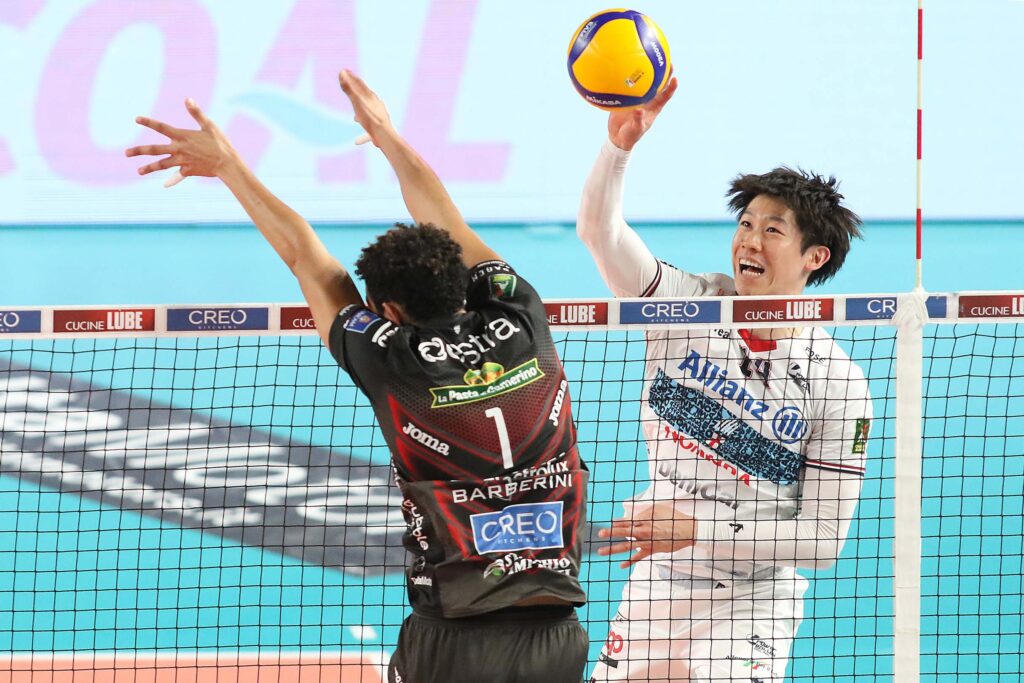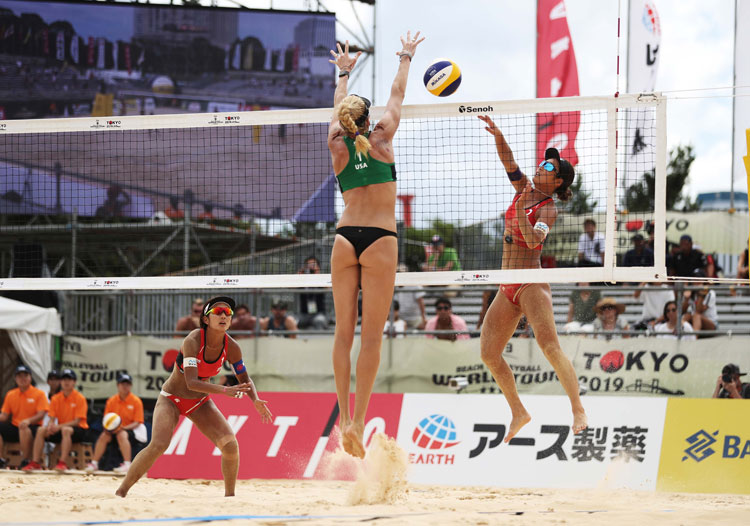
目次
- 1 Beach volleyball glossary
- 1.1 out of bounds
- 1.2 Ace
- 1.3 attack
- 1.4 adaptation
- 1.5 up
- 1.6 approach
- 1.7 inside out
- 1.8 interchange
- 1.9 in play
- 1.10 invader
- 1.11 eagle eye
- 1.12 wing
- 1.13 wind up
- 1.14 wave
- 1.15 warm up
- 1.16 Wally
- 1.17 ultramarine
- 1.18 ace
- 1.19 expedition match
- 1.20 end change
- 1.21 end line
- 1.22 Enpocket
- 1.23 overhand pass
- 1.24 overpass
- 1.25 open hand tip
- 1.26 open hand receive
- 1.27 offense
- 1.28 Opposite
- 1.29 cut shot
- 1.30 cutman
- 1.31 cover
- 1.32 kangaroo coat
- 1.33 guard
- 1.34 kick serve
- 1.35 give and go
- 1.36 cap
- 1.37 cannonball
- 1.38 carry
- 1.39 Last minute save
- 1.40 quick
- 1.41 quick serve
- 1.42 cross
- 1.43 cross coat
- 1.44 cross play
- 1.45 crater
- 1.46 claim
- 1.47 close block
- 1.48 Kegari
- 1.49 getter
- 1.50 cage van
- 1.51 game set
- 1.52 game points
- 1.53 game plan
- 1.54 course attack
- 1.55 coat change
- 1.56 coat dimensions
- 1.57 contact point
- 1.58 control shot
- 1.59 compact defense
- 1.60 combination play
- 1.61 coach
- 1.62 call
- 1.63 serve
- 1.64 serve receive
- 1.65 side out
- 1.66 side step
- 1.67 side change
- 1.68 sign play
- 1.69 sand coat
- 1.70 sand dive
- 1.71 sand bugger
- 1.72 Shut out
- 1.73 shank
- 1.74 shoot
- 1.75 short serve
- 1.76 short set
- 1.77 single block
- 1.78 synchronized attack
- 1.79 switch
- 1.80 sky serve
- 1.81 screen
- 1.82 scoring system
- 1.83 stand
- 1.84 step
- 1.85 straight
- 1.86 spike approach
- 1.87 spike block
- 1.88 speed control
- 1.89 three meter line
- 1.90 Swipe
- 1.91 second chance
- 1.92 second ball
- 1.93 setter
- 1.94 set
- 1.95 set up
- 1.96 set position
- 1.97 safety
- 1.98 save
- 1.99 save attack
- 1.100 center line
- 1.101 soft serve
- 1.102 soft block
- 1.103 solid serve
- 1.104 solex
- 1.105 social distancing
- 1.106 turnover
- 1.107 tight set
- 1.108 timeout
- 1.109 touch out
- 1.110 Tap
- 1.111 Vertical set
- 1.112 Seed
- 1.113 Tanomen
- 1.114 tabel
- 1.115 chase
- 1.116 check ball
- 1.117 charge
- 1.118 challenge
- 1.119 chance ball
- 1.120 two set
- 1.121 two touch
- 1.122 two by two
- 1.123 tool
- 1.124 tooled
- 1.125 Tsukasa
- 1.126 technical timeout
- 1.127 Technique
- 1.128 tempo
- 1.129 tape
- 1.130 theme
- 1.131 toss
- 1.132 topspin
- 1.133 top hand
- 1.134 triple block
- 1.135 training
- 1.136 trophy
- 1.137 Trowing
- 1.138 nice serve
- 1.139 nice receive
- 1.140 nice play
- 1.141 knuckle serve
- 1.142 narrow line
- 1.143 License plate
- 1.144 Nearside
- 1.145 neutral grip
- 1.146 knee touch
- 1.147 wet sand
- 1.148 get wet
- 1.149 Net
- 1.150 internet infrastructure
- 1.151 no touch
- 1.152 no bound
- 1.153 no block
- 1.154 No mistakes
- 1.155 Nonstop
- 1.156 no look shot
- 1.157 Highball
- 1.158 high performance
- 1.159 hat trick
- 1.160 hand signals
- 1.161 handset
- 1.162 hard hit
- 1.163 half coat
- 1.164 back attack
- 1.165 back coat
- 1.166 bag
- 1.167 hit
- 1.168 physical training
- 1.169 fake
- 1.170 feint
- 1.171 formation
- 1.172 follow
- 1.173 footwork
- 1.174 flying receive
- 1.175 Frustration
- 1.176 free ball
- 1.177 heads up
- 1.178 head coach
- 1.179 henna chocolate
- 1.180 heaven
- 1.181 help
- 1.182 home court
- 1.183 hold
- 1.184 hop step
- 1.185 positioning
- 1.186 positive error
- 1.187 match point
- 1.188 management
- 1.189 manual defense
- 1.190 Multi-touch
- 1.191 Man-to-man defense
- 1.192 middle attack
- 1.193 middle block
- 1.194 miracle play
- 1.195 miss judge
- 1.196 misleading
- 1.197 mini game
- 1.198 movement
- 1.199 Mood makers
- 1.200 mesh
- 1.201 mental
- 1.202 member change
- 1.203 motion
- 1.204 mall
- 1.205 momentum
- 1.206 morals
- 1.207 Effective hit
- 1.208 priority
- 1.209 advantageous position
- 1.210 shaking
- 1.211 uniform
- 1.212 youth
- 1.213 have some leeway
- 1.214 easy points
- 1.215 tools
- 1.216 Qualifying
- 1.217 prediction
- 1.218 margin
- 1.219 line
- 1.220 line attack
- 1.221 rally
- 1.222 Rally point system
- 1.223 running score
- 1.224 reach
- 1.225 lead
- 1.226 recovery
- 1.227 request
- 1.228 recycling
- 1.229 Reserve
- 1.230 lift
- 1.231 relax
- 1.232 loose ball
- 1.233 rule
- 1.234 look
- 1.235 receive
- 1.236 referee
- 1.237 report
- 1.238 range
- 1.239 rotation
- 1.240 rotation fault
- 1.241 lobbing
- 1.242 long serve
- 1.243 long ball
- 1.244 wipe
- 1.245 one hand receive
- 1.246 one touch
- 2 At the end
Beach volleyball glossary
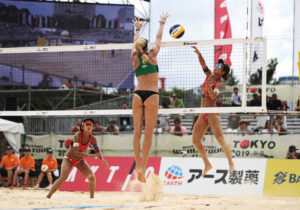
Volleyball played on a sandy beach is beach volleyball!
Jump and attack brilliantly on the sandy beach overlooking the beautiful sea! receive!
Although beach volleyball is a very dynamic and cool sport
The ground is sandy, so one of its characteristics is that it requires a lot of physical strength, contrary to its appearance.
This time, we will introduce a simple list of terms related to beach volleyball, which has many charms.
If you want to know more about beach volleyball, please take a look at this beach volleyball glossary.
out of bounds
The ball is out of court. Beach volleyball courts are divided by sand, and if the ball goes outside these lines, it is considered out.
Ace
Serves directly result in points. Recorded when the ball goes out without being touched by the receiver, or when the ball is touched but cannot be returned effectively.
attack
Hitting the ball into the opponent’s court. In beach volleyball, this often refers to the act of striking with a strong force like a spike, but in some cases a soft touch can also create an opening for the opponent.
adaptation
Ability to change tactics and techniques depending on the situation. Beach volleyball is easily affected by the wind, so flexibility is required to constantly adapt to the situation.
up
Refers to the general movement of raising the ball. It often refers to a pass used during setup, but it is also used when raising the ball in defence.
approach
To perform an attack, move to a jumping position with a run-up. The approach method and timing of the jump are important factors for an effective attack.
inside out
A technique for hitting the ball from the inside of the court to the outside when attacking. You can outsmart your opponent’s expectations.
interchange
When players rotate or swap positions.
In beach volleyball, this is often done before receiving a serve or after scoring.
in play
The state in which the ball is in play and the game is in progress.
If the ball goes out or there is a foul, it is no longer in play.
invader
When hitting the ball into the opponent’s court, do it in a way that exceeds the opponent’s expectations.
Or, a tactic that puts pressure on the opponent by driving deep into the opponent’s court.
eagle eye
Although it is not directly used in beach volleyball, it may refer to a line judge decision support system that uses technology.
Used to accurately determine whether the ball is in or out.
wing
In beach volleyball, the area near the sideline.
Attacks from the wings tend to be angled and can be difficult for the opponent to defend against.
wind up
The swinging motion of the arm before hitting a serve or spike.
Wind-up is an important element for a powerful attack.
wave
Although it is not a term directly used in beach volleyball, it is sometimes used as a sports term to refer to launching attacks in succession.
An image of attacks surging in like waves.
warm up
A warm-up exercise before a game or practice.
Necessary to warm up your muscles, prevent injury, and perform at your best.
Wally
In beach volleyball, hitting the ball repeatedly without touching the ground.
Or, it refers to the technology itself.
ultramarine
Although it is not a beach volleyball term, it is a color that refers to the bright blue color associated with the sea and beaches.
It is sometimes used to express the color of the sea and sky surrounding the beach volleyball court.
ace
To score points directly with a serve. This term is used when a serve is successful in preventing the opponent from touching the ball.
expedition match
A friendly match or exhibition match that is not an official match. It is held for the purpose of improving technique, testing tactics, and for entertainment.
end change
In beach volleyball, players change sides of the court after a certain number of points.
In order to maintain fairness, this rule ensures that the wind direction and sunlight are evenly affected.
end line
The boundary line behind the beach volleyball court.
If the ball crosses this line and goes out, the opposing team scores a point.
Enpocket
A beach volleyball falling between or near the net and the pole.
This is one of the most difficult plays for the receiver, as the ball often lands at an unpredictable point.
overhand pass
A pass in which the ball is hit by hand from above. Mainly used for setup and defense. This technique is performed by placing both hands on top of the ball.
overpass
A pass in which the ball goes over the net and directly into the opponent’s court. This is usually one of the plays you want to avoid as it can give you an opportunity to attack.
open hand tip
The technique of lightly poking the ball with your fingers. In beach volleyball, attacking the ball with this technique is restricted by the rules.
open hand receive
Receiving the ball with an open hand (open palm).
However, in beach volleyball, there are strict rules against using the palm of your hand to play the ball, and arm receiving is mainly recommended.
offense
About attack. Refers to the act and general tactics of aiming to score points by hitting the ball into the opponent’s court.
Opposite
A player in a position on the court who is primarily in charge of attack.
In beach volleyball, players are rarely fixed in a specific position because it is a two-person game, but they are sometimes used depending on tactics and role division.
cut shot
A technique for hitting the ball at sharp angles to the corners and sides of the court in order to evade the opponent’s defense. It’s not about force, it’s about angle and accuracy.
cutman
Although it is not an official term especially in beach volleyball, it may refer to a player who is good at cut shots.
Alternatively, it can also refer to a defender who takes defensive positions with cut shots in mind.
cover
A defensive move to pick up the ball when an ally’s attack is blocked.
Important for supporting your teammates’ attacks and maintaining your chances of scoring points.
kangaroo coat
It is not a beach volleyball term and is not often used to refer to a specific beach volleyball court or equipment, but it may be used as a colloquial term for the beach or facility where beach volleyball is played.
However, it is not a commonly recognized term.
guard
In beach volleyball, the term “guard” is not particularly common, but it is sometimes used to refer to actions and strategies to prevent an opponent’s attack when defending or blocking.
Or, it may be used in a context such as “guarding” an opponent’s attack pattern.
kick serve
A technique for serving the ball using the feet. However, according to the official rules of beach volleyball, services using any part other than the hands are not permitted.
This term is sometimes used in informal play or games for fun.
give and go
A tactic in which the player who made the pass immediately moves to a position where he can receive the ball.
In beach volleyball, this movement is very important because it is a two-person game.
Refers to cooperative play that combines passing and movement.
cap
A hat worn by players during beach volleyball games to protect their eyes from the sun and sand.
They may also wear official caps with the logo of a particular competition or team.
cannonball
Although it is not a common term especially in beach volleyball, it is an expression that is sometimes used colloquially to refer to a very powerful spike or serve.
It means hitting a very fast and powerful ball into the opponent’s court.
carry
The violation of illegally holding or transporting the ball.
In beach volleyball, contact with the ball must be instantaneous, and the act of grabbing or pushing the ball is considered a “carry.”
Last minute save
Successfully protecting the ball and continuing play when the ball is on the verge of going out of court or in extremely difficult situations.
Although it is extremely difficult, it is an important play to continue the game.
quick
About haste. An attack in which the attacker quickly reacts to a quick pass from the setter.
In beach volleyball, players are required to play at high speed within a limited space and time.
quick serve
A serve performed quickly with minimal preparatory movements in order to change the rhythm of the match or surprise the opponent.
The aim is to gain an advantage by striking before the opponent is ready.
cross
An attack method in which the ball is hit diagonally across the court in order to subvert the opponent’s expectations.
This is a play in which you watch your opponent’s placement and movements and surprise them.
cross coat
The area opposite when the beach volleyball court is divided diagonally.
There is a strategy to aim at this cross court area when attacking or defending.
cross play
Hitting the ball diagonally across the court when attacking.
This is an attack method that betrays the opponent’s expectations and creates gaps in their defense.
crater
An indentation made in the sand after a player jumps during a game of beach volleyball.
It is especially seen after high jumps or when landing on powerful spikes.
claim
Complaining to the referee about a foul or violation of the rules by the opposing team.
This is not an official beach volleyball term, but generally refers to complaints that occur in competitions.
close block
A defensive move in which the arms are stretched high near the net in order to directly block the opponent’s spikes.
The aim is to limit the opponent’s attack course and steal points.
Kegari
The act of brushing away sand with your hands to avoid sand getting into your eyes or mouth while playing beach volleyball.
or leveling the sand within the play area.
getter
In beach volleyball, this term refers to a player with particularly excellent defensive ability.
An expression that praises a player who has the ability to “get” many difficult balls.
cage van
A small cart or box for carrying balls used in beach volleyball matches and tournaments.
Placed courtside for quick ball delivery during the match.
game set
The beach volleyball match has been decided and the winner has been determined.
Obtain a set point and end the match.
game points
The final point to end the match.
Earning these points determines the victory of the game.
game plan
The strategies and plans a team makes before a game.
This is a plan to analyze the opponent’s characteristics and weaknesses and make the most of your team’s strengths.
course attack
An attack aimed at a specific direction or area of the court. The attacker reads the opponent’s position and movements and aims at an effective location.
coat change
Courtside exchanges that occur after every set or certain point. This is done to equalize the effects of wind direction and sunlight.
coat dimensions
The beach volleyball court is set on the sand and is rectangular, 16 meters long and 8 meters wide. This is the standard size used in international competitions, etc.
contact point
The contact point of the hand and fingers when hitting the ball. By mastering the precise contact point, you can hit more accurate and powerful shots.
control shot
A shot with reduced force and increased accuracy. It is used strategically, such as aiming at an area of the court where there are no opponents.
compact defense
A defensive form that narrows the defensive range and gathers together to respond to the opponent’s attacks. Especially effective against powerful spikes and shots.
combination play
Predetermined cooperative play. This is a tactic in which two players build an attack while complementing each other’s movements.
coach
team leader. We plan tactics, provide guidance to players to improve their skills, and provide advice during matches.
call
A player’s vocal communication during a match. This is important for smooth team play, such as ball situation and tactical instructions.
serve
Hitting the ball from behind into the opponent’s court to start the game. This is also an opportunity to earn points directly.
serve receive
The first pass to prepare for an attack after receiving the opponent’s serve. Stable reception is the foundation of an effective attack.
side out
The serving team loses a point and the right to serve passes to the opposing team. Or the play that led to that situation.
side step
A movement technique that involves quickly stepping to the side. This is an especially important movement when defending.
side change
In beach volleyball, players switch sides of the court every time they score a certain number of points. Conditions may vary depending on the tournament.
sign play
Communicate the next play to teammates using predetermined hand signals or cues. Determine the position of the block and the type of attack.

sand coat
A sand court where beach volleyball is played. Sand is spread evenly at a specific depth.
sand dive
A dive performed when chasing a ball in the sand. This is done to protect the ball and continue play.
sand bugger
A slang term referring to an athlete who participates in tournaments at a lower level than his/her actual ability and tries to win easily. It is considered unsportsmanlike conduct.
Shut out
To complete a set or match without allowing the opposing team to score a single point. It is considered an indicator of overwhelming defensive and offensive power.
shank
A ball that you lose control of due to a poor reception or dig. It is characterized by flying in irregular directions.
shoot
Pass the ball in a low, fast trajectory instead of high. It is used to break down the opponent’s defense.
short serve
Hitting a short serve toward the front of the court. This is a tactic used to draw the opposing team’s receiver forward and disrupt the rhythm of the attack.
short set
Set the ball low, near the net. A technique used to launch rapid attacks.
single block
A block that is completed by one person. In beach volleyball, most blocks are single blocks because there are only two players.
synchronized attack
An attack pattern in which two attackers jump at the same time, making it difficult for the opposing blocker to judge. It has the effect of confusing the opponent’s block and defense.
switch
A change of position on the court by a player during a match. Particularly in beach volleyball, players may change sides (side switch) after a certain number of points.
sky serve
A serve that is launched very high. Also called a skyball serve, it is used to obstruct an opponent’s vision or judgment.
screen
Standing so as to block your opponent’s view of the net. However, official beach volleyball rules prohibit intentional screens.
scoring system
A system for counting points in a match. Beach volleyball uses a rally point system, and each time one team scores a point, the score increases.
stand
Seats and tables used by spectators to watch matches. Large tournaments may have special stands.
step
The movement and placement of the feet. Players use steps to adjust how they receive a serve, prepare for an attack, position themselves defensively, and more.
straight
An attack in which the ball is aimed parallel to the net or between opposing players. It is used to surprise the opponent.
spike approach
A preparatory movement for running or jumping before hitting a spike. Proper approach is important for effective spikes.
spike block
A block that is used online to prevent an opponent’s spike attack. Proper timing and positioning are required.
speed control
A technique to adjust the speed of the ball. You are required to change the speed of the ball depending on the situation, such as attacking, passing, or serving.
three meter line
Although it does not exist in beach volleyball, in indoor volleyball it refers to the offensive line drawn 3 meters away from the net.
This line is not set in beach volleyball due to the small size of the court.
Swipe
The technique of changing the direction of the ball while slightly touching the opponent’s hand in order to avoid a block.
Earn points by taking advantage of your opponent’s blocker’s moves.
second chance
To obtain another opportunity to attack when the attack is not successful. Another chance to earn points.
second ball
The second action in which a team touches the ball. In beach volleyball, one of the tactics is to use the second ball for attack.
setter
A player who is the team’s playmaker, performs sets (passes), and serves as the starting point for attacks. In beach volleyball, since it is a two-person game, both players often play this role.
set
The skill of controlling the ball and passing it to teammates for attacking purposes. Or the unit of a match (in beach volleyball, a match consists of multiple sets).
set up
The action of setting up the ball to perform an attack. Proper setup leads to effective spikes and other means of attack.
set position
Body position and posture when setting (passing) the ball. Correct set position is essential for accurate passing.
safety
Actions and rules to ensure safety during play. Refers to measures taken to prevent injury to players.
save
An action to block an opponent’s attack and prevent the ball from falling to the ground. Includes digs and receives.
save attack
A play in which the ball is attacked by the opponent and then turned into an attack. Refers to a quick transition from defense to attack.
center line
In beach volleyball, the center line that divides the court into left and right sides. However, there is no physical center line on a beach volleyball court; it is conceptual.
soft serve
A serve that is hit at a slow speed with less force. It may be used to disrupt the opponent’s timing.
soft block
A block that is performed with a soft hand to slow down the speed of the ball. Rather than directly stopping the opponent’s attack, it slows down the momentum of the ball, making it easier to defend.
solid serve
A strong serve with an emphasis on certainty. It is used to reduce errors and put pressure on the opponent.
solex
Although the term is not directly related to beach volleyball, it may be used for certain brand names or products, such as beach volleyball shoes or sunglasses.
Although not a specific term, it refers to maintaining an appropriate distance between players during play and outside of the game. Recently, it has become more important for health reasons and safety reasons.
turnover
The transfer of control of the ball from one team to another. This occurs due to service errors, attack failures, etc.
tight set
A ball set very close to the net. This is an easy position for an attacker to spike, but it also increases the risk of being blocked.
timeout
The break time the team takes during a match to rest and discuss strategy. Each team can use a limited number of timeouts per set.
touch out
The attacking ball is out after touching an opposing player. The attacker gets the point.
Tap
A technique of hitting the ball lightly with less force. Used to avoid blocks or drop them into empty spaces.
Vertical set
Set parallel to the net. Performed against a teammate and used as a preparatory move for an attack.
Seed
A word used to describe a particular tactic or style of play.
Although it is not a common term in beach volleyball, a strategy against an opponent is sometimes described as “sprinkling seeds.”
Tanomen
Powerful serves and attacks to increase pressure on the opposing team.
Although not a direct beach volleyball term, it is sometimes used to praise strong play.
tabel
Refers to the ability to control the ball and place it anywhere on the opponent’s court.
This expression is not very common in beach volleyball, but is sometimes used to show good technique or tactical awareness.
chase
Chasing the ball during play and playing the ball from outside the court or from difficult positions.
It is especially used when digging (receiving) an opponent’s attack or when saving a ball that is about to go out.
check ball
During a match, to ask the referee or the opposing team to confirm the situation, such as whether the ball has fallen on the line or whether the opponent has touched the net.
charge
Actively starting an offensive play or moving forward against the ball. This refers to a highly offensive approach.
challenge
Although the official challenge system in beach volleyball is limited, it refers to the act of disputing a referee’s decision or requesting reexamination of a particular play.
chance ball
A ball that can be handled relatively easily and allows play from the opponent to easily turn into an attack. It is important to take advantage of this opportunity to earn points.
two set
A low toss used when attacking. The set (pass) is low and fast, allowing you to attack without giving your opponent time to react.
two touch
In beach volleyball, it is generally illegal for one person to touch the ball twice in a row, but touching the ball during a block is not counted, and the player is allowed to touch the ball again immediately afterwards.
It may refer to this.
two by two
2 on 2 beach volleyball.
Beach volleyball is basically played in this format, and each player needs to have all-round skills.
tool
A technique that uses the opponent player’s blocks to score points.
Blocks are used as “tools” by placing the spike on the opponent’s hand and hitting the ball so that it goes out.
tooled
This refers to the state of being “tooled”, that is, the block is used by an attacker to gain points.
Tsukasa
Although not a specific beach volleyball term, it may be a name associated with a beach volleyball brand name or manufacturer.
It is sometimes known as the manufacturer name of beach volleyball.
technical timeout
In some beach volleyball tournaments, a short break that occurs automatically when a certain score is reached during a set.
It is used by players to revise their strategies and recover from fatigue.
Technique
Refers to all techniques in beach volleyball. These are the basic movements that make up the game, such as serve, receive, set, spike, and block.
tempo
The speed and rhythm of the attack. In beach volleyball, you can break down your opponent’s defense by attacking at a high tempo.
tape
A strip of cloth, usually white, that covers the top edge of the net.
If the ball touches this tape, play continues, and any ball that goes beyond the tape is considered in play.
theme
The tactical and technical policies that a team focuses on in games and practices.
For example, themes could be “apply pressure with a powerful serve” or “try to play solid defense.”
toss
The action of throwing the ball up when serving, or the action of a setter raising the ball for an attack.
Accurate tosses are essential for effective serves and attacks.
topspin
To give the ball forward rotation. By adding topspin to your serve or spike, you change the speed and trajectory of the ball, making it harder for your opponent to receive it.
top hand
A technique that uses the upper part of the hand when hitting the ball. It is especially used when hitting powerful shots with spikes or serves.
triple block
This is a play that is basically not seen in beach volleyball, and in indoor volleyball, three players block in front of the net at the same time.
This term does not apply to beach volleyball as it is a two-person sport.
training
Practice activities to improve technique and physical strength. Beach volleyball players train regularly to maintain high levels of stamina, strength, and technique.
trophy
An award given to a team or player who wins a competition or tournament. In addition to trophies, medals and cash prizes are sometimes awarded at beach volleyball tournaments.
Trowing
An illegal act of hitting the ball as if it were thrown.
In beach volleyball, the way you hit the ball is strictly regulated, and you are not allowed to hold or pull the ball.
nice serve
A compliment used when someone hits a particularly good serve. Represents encouragement and admiration from teammates and spectators.
nice receive
A word used when successfully catching an opponent’s powerful serve or attack. Used to praise excellent defensive techniques.
nice play
It’s a term used for any good play, and is used by teammates or spectators to praise great technique or tactics.
knuckle serve
A serve that hits the ball using the knuckles of the fingers. Because the ball is hit with little rotation, it may draw an irregular trajectory.
narrow line
An attack in which the ball is hit very close along the sideline of the opponent’s court. A technique in which the ball is dropped into the opponent’s court at a narrow angle.
License plate
A plate or uniform with a number printed on it worn by players during official matches. Used to help identify players.
Nearside
The area on the front side of the court, especially the left side when viewed from the server. In beach volleyball, this is one of the locations that players target when changing direction of attack.
neutral grip
A type of hand grip used when hitting the ball. This grip has the palm in a neutral position relative to the ball, making it easy to move in any direction.
knee touch
The action of receiving the ball with one’s knees on the ground during defense.
Although it is one of the effective ways to receive a low ball, this term is less common in beach volleyball than in indoor volleyball, as it is played on sand.
wet sand
The sand on the beach volleyball court is wet from rain. Wet sand can become heavy and affect players’ movement.
get wet
It rains during a beach volleyball game, and the players and ball get wet. Playing in rain requires special attention to ball handling and players’ slipperiness.
Net
One of the main facilities for beach volleyball. The court is divided into two halves, and during play, the ball is hit over this net.
Many plays are based on this net, such as rules for net touching, attacks that cross the net, and blocks.
internet infrastructure
Violations caused by accessing the internet. In beach volleyball, points may be awarded to the opposing team if you unintentionally touch the net during play.
no touch
A term used when the opposing team is out without touching the ball.
It may be declared if the ball goes over the net and falls into the opponent’s court, but is not touched by the opponent player.
no bound
In beach volleyball, the state in which play can continue without the ball touching the ground.
In beach volleyball, the ball must be hit back before it touches the ground.
no block
The opposing team must not block when attacking.
Alternatively, it may refer to a tactic in which the own team concentrates on defense without blocking.
No mistakes
To continue playing without making errors or mistakes.
Used to emphasize the importance of maintaining consistent performance during a match.
Nonstop
Continuous play without breaks or interruptions. In beach volleyball, it can refer to a rally continuing or a match progressing smoothly.
no look shot
A shot that is performed without looking directly at the opponent or the ball.
It may be used to make predictions wrong or as a technical showcase.
Highball
A tactic of deliberately launching the ball high in order to put pressure on the opposing team. Or, when converting from defense, it is a play to buy time by raising the pass to the setter high.
high performance
A player’s performance above normal. Refers to outstanding play, especially in important matches or decisive situations.
hat trick
Achieving a specific result three times in one game, such as three points or blocks, by the same player. In beach volleyball, it is sometimes used to score consecutive points.
hand signals
In beach volleyball, hand signals are used to communicate instructions and tactics to a partner before playing. Communicate information such as block positions and defensive strategies non-verbally.
handset
The technique of catching the ball in the palm of your hand and raising it upwards. Used for precise location passes and setups.
hard hit
A very powerful spike or serve. Hit the ball with such force that it is difficult for the opponent to defend.
half coat
An area half the size of a standard court used for beach volleyball practice and small games. Used for technical and tactical practice.
back attack
attack from behind. In beach volleyball, aggressive play can sometimes occur even from behind.
back coat
the second half of the court. This is the area where defense is mainly performed.
bag
A bag for transporting beach volleyball equipment. Players carry everything they need for games and practices in this bag, including clothing, shoes, sunglasses, and hydration bottles.
hit
It refers to the act of hitting the ball in general, but it often refers to especially powerful spikes and attacks.
A play in which a player hits the ball forcefully into the opponent’s court is called a hit.
physical training
Training performed to improve the physical strength of athletes. This is an exercise to improve the physical abilities required in beach volleyball, such as muscle strength, stamina, flexibility, and reaction speed.
fake
Performing fake actions to deceive someone. This is a tactic that goes against your opponent’s expectations, such as pretending to hit a spike but actually hitting a light shot.
feint
Similar to a fake, a movement used to deceive an opponent during an attack. In particular, it is a technique to lure the opponent’s blocker and score points, such as from the movement of the spike to the final dodge of the ball.
formation
Beach volleyball tactics and formations. Refers to the assembly during a match, such as positioning with a partner and standing position when switching between offense and defense.
follow
After hitting the ball, prepare to continue the play or prepare for the next action. It can also refer to supporting a partner in attack or quickly moving to defense.
footwork
Adjust leg movements and standing position. In beach volleyball, footwork is very important in order to move efficiently on the sand.
It is required in all aspects of the game, such as preparing for attacks and quickly taking positions when defending.
flying receive
Although it is not a technical term for beach volleyball in particular, it may refer to receiving while diving.
This is a play where you throw your body out to hit the ball back in order to prevent it from falling to the ground.
Frustration
The stress and frustration you feel during a match. This refers to a state where you feel psychological pressure due to your opponent’s consecutive points or your own mistakes.
free ball
A ball that is not attacked by the opponent and can be handled relatively easily.
It is important to take advantage of this opportunity and build an effective attack.
heads up
Play while checking the position of the ball and the movements of your opponent.
Players always keep their heads up to understand their surroundings and decide on their next action.
head coach
A coach who is primarily responsible for coaching a team or players. Plans tactics, manages training programs, and issues instructions during matches.
henna chocolate
It is a slang term that means unskilled or weak.
It is sometimes used for players or plays that need technical improvement, but it is not an official term.
heaven
Although the term does not refer to a specific beach volleyball play or technique, it is sometimes used commonly to refer to a great play or an excellent playing spot.
help
A word used to ask for support or help from teammates or other players.
Use when you need cover when defending or when requesting tactical support.
home court
A local beach volleyball court where teams or players primarily practice and play matches.
It is a place where you can expect strategies that take advantage of your team’s geographical advantage and support from local fans.
hold
In beach volleyball, actions such as catching or carrying the ball with the hands are prohibited, but the term “hold” refers to the violation that the referee will point out when such foul play occurs.
It can also refer to the technical ability to control the ball reliably.
hop step
A step used to transition from a run-up to a jump when hitting a spike or serve in beach volleyball.
This is the movement of the legs that leads to an effective jump and powerful hitting.
positioning
The optimal position and placement for players on the court. This refers to taking the most effective position for each play, such as attacking, defending, or receiving a serve.
positive error
In beach volleyball, a positive error is a mistake that occurs as a result of trying to play aggressively.
For example, if you try to put pressure on your opponent with a powerful serve and end up getting out, this is a mistake that is the result of taking a risk in order to win.
match point
The last point needed to win the match. The match ends when this point is taken, and the team wins.
management
This refers to managing team operations, match preparations, practice schedules, etc. Effective management is essential to improving team performance.
manual defense
A defense method that responds to specific attack patterns with predetermined movements. Players analyze the opponent’s attacking tendencies and implement optimal defensive tactics.
Multi-touch
Touching the ball by multiple players during one play.
In beach volleyball, each team can touch the ball up to three times, and this refers to multiple players touching the ball.
Man-to-man defense
In beach volleyball, a form of defense in which each player on the opposing team is individually marked.
The aim is to defend effectively by having each player take responsibility for a specific opponent player.
middle attack
An attack aimed at the center of the court. It is used to exploit gaps in the opponent’s defensive arrangement. Spikes and shots to the center disrupt the opponent’s defensive balance.
middle block
A block that takes place in the center of the net. It is performed to counter the opponent’s mid-range attack or as part of a strategy to limit the direction of attack.
miracle play
Great plays that astonish spectators and players, including extremely high skill, luck, and amazing recovery from difficult situations. It’s a word that celebrates unexpected success or the success of a difficult play.
miss judge
Misjudgments by referees or mistakes in judgment by the players themselves. A wrong decision during a match can affect the points and the outcome of the match.
misleading
Intentionally leading someone in the wrong direction. Use feints and well-aimed shots to outwit your opponent’s expectations and create advantageous situations.
mini game
A practice match or small game played for fewer points than the official number of sets. This is done as part of technical practice, tactical confirmation, and warm-up.
movement
Refers to all the movements a player makes on the court. Effective movement includes quick footwork, proper positioning, and smooth movement when transitioning between attack and defense. Players always try to make good movements in order to respond to the opponent’s attacks and advance their own attacks to an advantage.
Mood makers
A player or staff member who creates a particularly positive atmosphere within the team and inspires his teammates. Boost team morale even under the pressure of a match, helping players relax and perform at their best.
mesh
The eyes of the beach volleyball net. In order to perform accurate control and blocking, it is important to be aware of the mesh of the net.
mental
A term that refers to an athlete’s psychological state and concentration. When it comes to the pressure during a match and the tactics with your opponent, mental strength has a big impact on winning or losing.
member change
Substitute players during the match. Beach volleyball is usually played in pairs, so substitutions are less common, but they can sometimes be seen in practice matches or casual games.
motion
Refers to the movement and use of the body when a player hits a serve or spike. Effective motion allows for attacks that are difficult for the opponent to predict.
mall
Although it may not be a specific term for beach volleyball, it can refer to a situation in which a group competes for the ball, which is used in sports in general.
A similar situation can occur in beach volleyball when the ball becomes a free ball.
momentum
This term refers to the flow and momentum of the match. When one team takes control of the match by scoring consecutive points, it is called “grasping momentum.”
morals
Refers to the morale and morality of individual team members and players. High morale helps maintain good teamwork and a good attitude towards the game.
Effective hit
This refers to an effective hit that makes it difficult for the opponent to return the ball. This could be a spike, a serve, or a clever placement shot. Effective hits give you a great chance to earn points.
priority
In beach volleyball, this indicates the priority and rights when playing the ball.
For example, there are rules that determine which players should touch the ball in certain situations.
advantageous position
The position that players should take in order to score points or strengthen their defense in beach volleyball.
It involves predicting the flight of the ball and the position of the opponent, and moving to the most advantageous position.
shaking
Tactics and actions designed to confuse the opposing team. When serving or attacking, you may put pressure on your opponent by making unexpected movements.
uniform
In beach volleyball, the official costume worn by players during matches.
Beach volleyball uniforms feature a design that emphasizes ease of movement and functionality, and are also used to identify teams and display sponsors.
youth
Refers to young players, especially those in the junior and youth categories.
In beach volleyball, efforts are being made in each country to develop youth players and expand the number of players.
have some leeway
This refers to the state in which you can act calmly without panicking while playing. It is important to have confidence in your own skills and strategies and to make the best decisions without rushing.
easy points
Points gained from an opponent’s errors or simple mistakes. In beach volleyball, players value points that can be easily gained through mistakes in service or poor communication by the opponent.
tools
Various equipment used in beach volleyball. Includes items needed for games and practice, such as balls, nets, poles, and line tape.
Qualifying
A preliminary competition or match in a beach volleyball tournament to advance to the main competition. By winning the preliminary rounds, you will gain the right to participate in the main tournament.
prediction
Read your opponent’s movements and the direction of the ball in advance. In beach volleyball, it is important to predict your opponent’s serve and attack patterns and choose the appropriate defensive position and attack method.
margin
Refers to a player’s positioning and room for movement on the court. By maintaining appropriate margins, you will be able to respond flexibly to your opponent’s attacks.
line
Boundary line surrounding the beach volleyball court. If the ball falls inside this line, it is judged to be in (valid), and if it falls outside this line, it is judged to be out (invalid).
line attack
An offensive shot that is hit along the sideline of the opponent’s court. This is a technique used to outwit an opposing defender.
rally
The ball is played consecutively without touching the ground. Refers to the series of plays starting with the serve and ending with the score being decided.
Rally point system
This is a common scoring system in beach volleyball, and the team that wins the rally wins points, regardless of which team has the serve.
running score
One of the scoring methods during a match, a system in which points are recorded for each rally. This method is commonly used in beach volleyball.
reach
In beach volleyball, the action in which a player extends his arm to hit the ball.
Particularly when blocking or spiking, aim to play effectively by reaching high and reaching the ball.
lead
Reading the flow of the game and the movements of your opponent. Or, it refers to the state where you are ahead of your opponent in score.
By leading the opponent’s serve and attack patterns, players can more easily predict their next moves.
recovery
Recovering mentally and physically after conceding a goal or making a misplay, and regaining the rhythm of the game. Also, the movement of defensive recovery from an unfavorable situation is also expressed as recovery.
request
A request made by a player to a referee during a match. For example, there are requests regarding the referee’s decisions, such as checking the opponent’s faults and confirming the score.
recycling
To create another attack opportunity if the ball is blocked or does not fall into the opponent’s court during an attack. Refers to the action of recovering the ball, setting it up again, and turning to attack.
Reserve
A player who was temporarily substituted during a match is replaced again by the original player. Or, it refers to spare players and equipment.
lift
An action similar to pushing the ball up with the palm of your hand. In beach volleyball, the act of lifting the ball with the palm of your hand when setting or receiving is sometimes considered a fault.
relax
Relax your body and mind during a game or practice. By relieving tension, you can bring out more natural movements and optimal performance.
loose ball
A ball that is free to move and does not belong to either team during play. In this situation, both teams will try to control the ball.
rule
Rules for conducting beach volleyball matches correctly and fairly. It includes guidelines for various behaviors such as serves, net touch, foot faults, and how to handle the ball.
look
The action of checking the placement of the opposing team and players. Before serving or attacking, look at your opponent’s court and choose the best play.
receive
To receive an opponent’s serve or attack.
Receiving is one of the most basic techniques in beach volleyball, and if you can reliably receive powerful attacks, it can greatly influence the flow of the match.
referee
A person who referees a match. Supervise that the game progresses according to the rules, judge scores, call faults, manage timeouts, etc.
report
Reports on match analysis and player performance evaluation. It is created by coaches and analytical staff after games and is used to identify areas for team improvement and next strategies.
range
The range within which a player can play effectively. It may refer to the range of the court that a player can cover when serving, receiving or defending, or the variety of shots that a player can hit when attacking.
rotation
The term rotation is less common in beach volleyball than in indoor volleyball, as two-man systems are more common in beach volleyball.
However, it is sometimes used for strategic moves, such as changing the order of serve or positioning when defending.
rotation fault
A term used in indoor volleyball that refers to a fault that occurs when a player is not in the correct position. This rule does not apply in beach volleyball, but serving out of order will result in a fault.
lobbing
It is sometimes used in beach volleyball to refer to a lob shot (a shot that is lightly hit backwards out of reach of the opponent).
Lobbing is a tactic that tricks your opponent into winning points.
long serve
A serve that hits deep into the back of the opponent’s court. It is used to make it difficult for the opponent to receive or to break the opponent team’s formation.
long ball
A shot that intentionally aims at the farthest part of the opponent’s court when serving or attacking. This is a tactic used to restrict an opponent’s movement or exploit gaps in their defense.
wipe
A technique that uses the opponent’s block to send the ball out of the opponent’s court. Earn points by hitting the ball so that it hits the block and goes out.
one hand receive
Receiving with one hand. This usually occurs when the ball suddenly changes direction or when you are out of position. It is technically difficult and requires great skill to be successful.
one touch
To touch the ball only once and return it to the opponent’s court by blocking. Or, it refers to touching the ball only once during defense to connect to the next play.
At the end

How did you like the beach volleyball glossary?
Beach volleyball is a dynamic sport played on sandy beaches that is popular all over the world and has a wide range of appeal.
Although it may not be very familiar in Japan.
It’s an international sport that’s supported by people of all ages, so much so that it’s even an Olympic sport!
Please try playing beach volleyball too!
